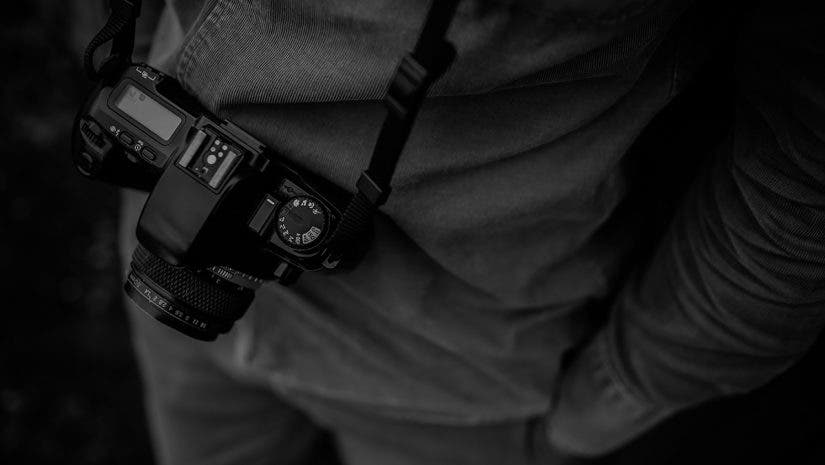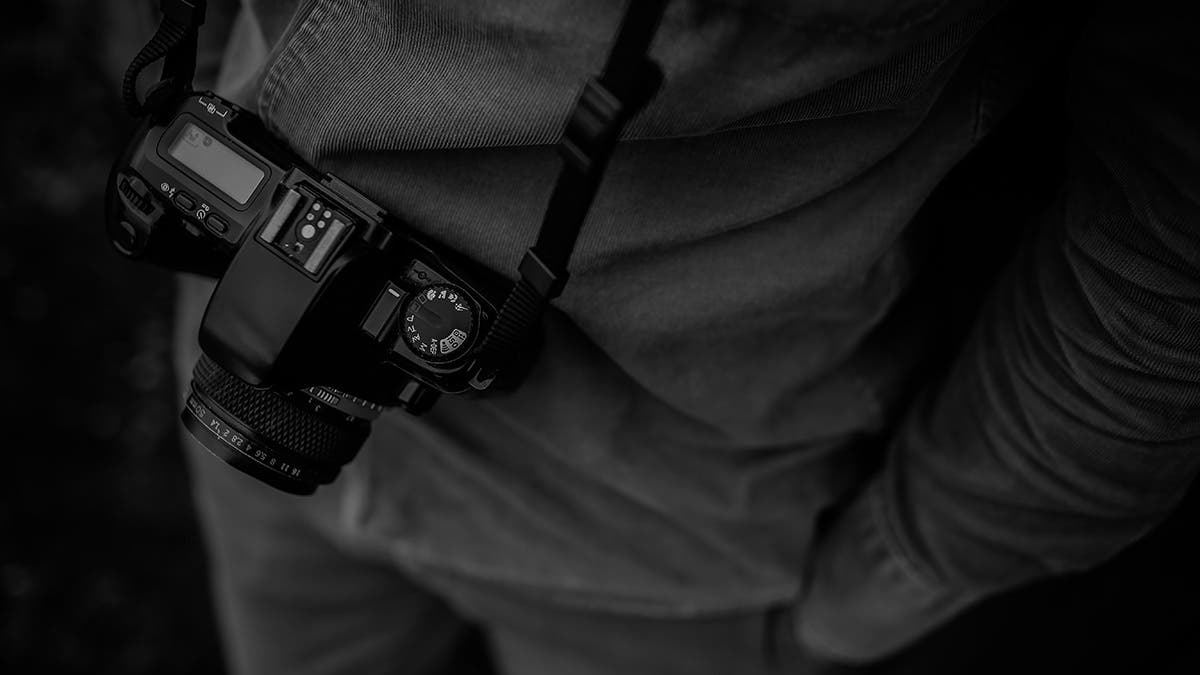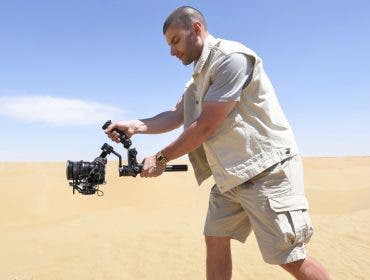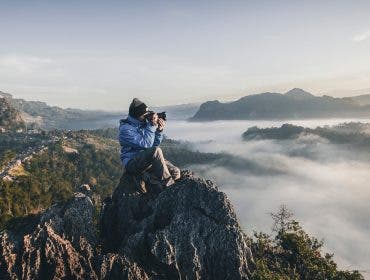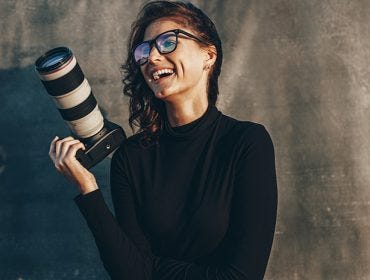Curious about the faces behind the lenses? In this article, we have 15 famous photographers who are icons in the photography industry.Knowing their names could lead you to try some of their techniques, and maybe you’ll earn your spot on an article like this someday.
15 Famous Photographers You Should Know
1. Ansel Adams
Ansel Adams is potentially the most famous American photographer of the 20th century, and perhaps all time. Known for his large-format black-and-white photography of the American West, Adams developed unique techniques like the Zone System that modern photographers still use today.
What is the Zone System method?
The Zone System is a method that was first developed to control exposure and adjust contrast in black-and-white photography. Even after eight decades, it is a useful and relevant method that photographers use to achieve optimal clarity and depth in their images by dividing tonal values into 11 zones, from pure black (zone 0) to pure white (zone 10).
2. Dorothea Lange
When you picture times in American history like the Great Depression and the Dust Bowl, Dorthea Lange’s images probably come to mind. Lange took her most famous photograph, Migrant Mother, when she was hired to capture journalistic images for the U.S. government.
What is the story behind ‘Migrant Mother’?
“Migrant Mother” is a famous photograph by Dorothea Lange dating back to the Great Depression era. In the picture is a migrant pea picker and her children in a makeshift tent. Lange took multiple shots, refining and readjusting both her angles and her subjects until capturing an intimate moment of the mother breastfeeding her baby. The picture is famous because it shows the resilience and strength of migrant families who endured so much during the Great Depression.
3. Edward Weston
Though he started out as a pictorialist who valued soft-focus and a dream-like quality in his images, Edward Weston eventually gravitated toward sharp resolution and strong contrast. He photographed all kinds of subjects, from still-life images of peppers to landscapes and nude portraits.
His amazing work allowed him to become the first photographer to receive a Guggenheim Fellowship Award, when all the others to receive the award before him were in different industries such as Natural Science, Social Science, and even Medicine and Health.
What is a Guggenheim Fellowship?
A Guggenheim Fellowship is a prestigious grant for talented artists to support their projects. It offers financial assistance without limiting the subject matter or approach, allowing recipients to execute their artistic vision without holding back. A Guggenheim Fellowship award gives photographers the opportunity to experiment, grow, and develop their portfolio.
4. Henri Cartier-Bresson
As a portrait and street photographer, Henri Cartier-Bresson often spoke about the importance of capturing the decisive moment. With a fantastic sense of composition and a deep understanding of the human element, Cartier-Bresson is the gold standard of street photography to this day. Cartier-Bresson almost exclusively used Leica 35mm Rangefinder cameras with 50mm lenses. Occasionally, he used a wide-angle for landscapes.
Why did famous photographers prefer Leica cameras?
Famous photographers like Cartier-Bresson preferred Leica cameras because they were affordable for professionals in the 1930s. Leica cameras were famous for their high-quality performance and portability, making them ideal tools for capturing decisive moments in photojournalism.
5. Irving Penn
With a background as an art director, Irving Penn branched into portrait photography. There, he worked as both a designer and a photographer for Vogue magazine. Further, he captured intimate and arresting portraits of models and celebrities, working primarily with studio light.
How did Irving Penn become one of the most famous photographers?
After taking amateur photographs for three years as a freelance designer, Irving Penn became the art director at Saks Fifth Avenue in 1940. Penn worked at Saks Fifth Avenue for a year before leaving and spending the next year painting and taking photographs across the United States and Mexico.
When he came back to New York, Alexander Liberman made him an associate in Vogue’s Art Department. Ever since then, Penn pushed the boundaries for portrait photography and became a top photographer for Vogue magazine for more than sixty years.
6. Richard Avedon
Richard Avedon was one of the most sought-after fashion photographers of his time. One of his best-known images features an elegantly dressed model posing her arms in the same way as the two elephants on either side of her are lifting their trunks — a shot that exemplifies his unique vision and style. His works were showcased at a recent exhibit named “Avedon 100” in New York, featuring Avedon’s photographs with famous icons.
Who were the famous icons that Richard Avedon photographed?
Richard Avedon photographed some of the most iconic figures in 20th-century pop culture, including The Beatles and Marilyn Monroe. His portraits of the icons were featured in magazines like Rolling Stone, Vogue, and Harper’s Bazaar and even ended up in modern art museums.
7. Diane Arbus
Known for somewhat uncomfortable images of bizarre subjects, Diane Arbus was an American portrait photographer who shook up the photography industry. Also, her subjects looked directly at the camera, a style that was off-putting for many critics and viewers at the time (namely the 1960s and ‘70s).
How did Diane Arbus influence others?
Diane Arbus influenced others by challenging conventional norms and perceptions through her photography. She captured subjects considered unconventional, such as people who were referred to as “social outcasts,” which prompted viewers to question the existing societal standards of beauty and normalcy.
8. Man Ray
With an exceedingly unique body of work, Man Ray was a member of the Surrealist movement. He focused not only on traditional photography methods but also created photograms by placing objects on photosensitive paper and exposing them to light. While living in Paris, he captured famous and iconic images of Picasso and Gertrude Stein.
What is surrealism?
Surrealism in photography involves creating images that defy logic and reality, often through dreamlike or unconventional perspectives. It encourages photographers to tap into their subconscious and imagination to produce visually captivating and thought-provoking compositions.
Through surrealism, photographers can explore the subconscious mind, symbolism, and investigate the blurred lines between reality and fantasy, allowing for limitless creativity and expression in their work.
9. Robert Capa
Best known for his work photographing scenes from the Spanish Civil War, Robert Capa was one of the earliest war photographers in history. During World War II, he was the only civilian photographer on the beaches of Normandy.
What is civilian photography?
Civilian photography refers to taking pictures in everyday life without any specific professional or journalistic purpose. It’s often another way to refer to street photography. It’s about using a camera to document personal experiences, events, or simply the beauty of the world around you.
Civilian photography is a way to freeze memories in images. It doesn’t require formal training or expensive equipment, just a passion for capturing moments with a camera.
10. Robert Mapplethorpe
No stranger to controversy, Robert Mapplethorpe was best known for his portraits of gay men in New York City in the ‘70s. Additionally, he worked with a variety of publications, creating portraits, album covers and more with polaroids and medium-format film cameras.
What are the best film cameras?
Some popular film cameras are the Canon AE-1, Nikon FM2, and Pentax K1000. These cameras are known for their reliability, they’re easy to figure out and use, and their lenses and accessories are highly available.
11. Steve McCurry
As a photographer for National Geographic, Steve McCurry captured one of his most famous images, Afghan Girl. Additionally, McCurry regularly traveled to impoverished areas and locations of conflict in the Middle East, Africa, and Asia. Finally, he remains one of the world’s most famous travel portrait photographers.
What is the story behind ‘Afghan Girl’?
“Afghan Girl” features a young female Afghan refugee named Sharbat Gula, with piercing green eyes. The photo became iconic for its power to draw emotions and the girl’s haunting gaze, which symbolized the struggle of refugees at the time.
McCurry saw her in a refugee camp in Pakistan and captured the image, later becoming one of National Geographic’s most recognizable covers. It was a powerful image that drew a lot of attention to the Afghan conflict and refugee crisis.
12. Yousef Karsh
Best known for his famous image of Winston Churchill, Yousef Karsh had a long and storied career. In addition, he photographed a variety of historical icons and celebrities using unique studio lighting techniques.
What are the best lighting techniques?
Some of the best lighting techniques include using natural light, diffusing harsh sunlight with curtains or sheets, and positioning your subject near windows for soft and flattering lighting. Experimenting with reflectors to bounce light onto your subject can add dimension to your photos. Additionally, using artificial lighting sources like softboxes or umbrella lights can help photographers control light to get professional-looking results.
13. Annie Leibovitz
One of the defining and famous photographers of the modern era, Annie Leibovitz is known for compelling portraits employing sophisticated posing and lighting techniques. As a regular contributor to Vanity Fair and Rolling Stone, she’s photographed many celebrities from John Lennon to Queen Elizabeth II.
What are the best posing techniques?
A good feminine posing tip is to ask the subject to relax their hands and avoid tightening in any part of the body. You can also ask your model for natural gestures like lightly touching their hair or clothing.
For masculine posing, on the other hand, instruct your model to have a straight posture with shoulders pulled back and chest slightly puffed out. Direct them to keep their hands relaxed, either hanging at their sides or casually placed in pockets or on hips.
14. Andreas Gursky
In 2011, Andreas Gursky broke the record for selling the most expensive photograph in history for $4.3 million. Finally, he’s known for large format images of landscapes that carry a unique sense of scale and point of view.
What is the most expensive photograph ever?
The most expensive photograph ever sold is “Rhein II” by Andreas Gursky. It shows the Rhine River and sold for a whopping $4.3 million at an auction in 2011. The photograph is known for its minimalistic style and large scale, measuring approximately 73 inches (185.4 cm) in height and 143 inches (363.5 cm) in width. Its price is a reflection of the photograph’s influence on art and the high demand for Gursky’s work.
15. Robert Frank
Though he got his start in fashion photography, Robert Frank captured spontaneous travel images for Life and Vogue magazines. Additionally, his book The Americans is a widely influential work for many photography enthusiasts and students.
The Americans features a collection of black-and-white photographs showcasing American life and culture during the 1950s. The book is famous for its candid and unconventional theme, offering a raw and unfiltered portrayal of American society back then. The Americans has impacted generations of photographers, helping shape the growth of documentary photography.
What is the significance of photography books?
Photography books have been essential in keeping visual records of historical events, cultures, and everyday life. They provide an accessible way for people to explore and learn about different time periods and places through images.
Photography books have also served as a physical form for photographers to showcase their work, share their perspectives, and add their own pieces to artistic movements. They play an important role in blending democracy with photography by making it available to audiences outside of galleries and museums.
Your Turn to Shine
Now that you’ve gotten to know these famous photographers, it’s time to pick up your own camera and start capturing your own moments. Remember that with each picture, you can tell a story and leave a lasting impression on the viewer.
Channel your inner artist, embrace your unique perspective, and let the world see through your lens.
